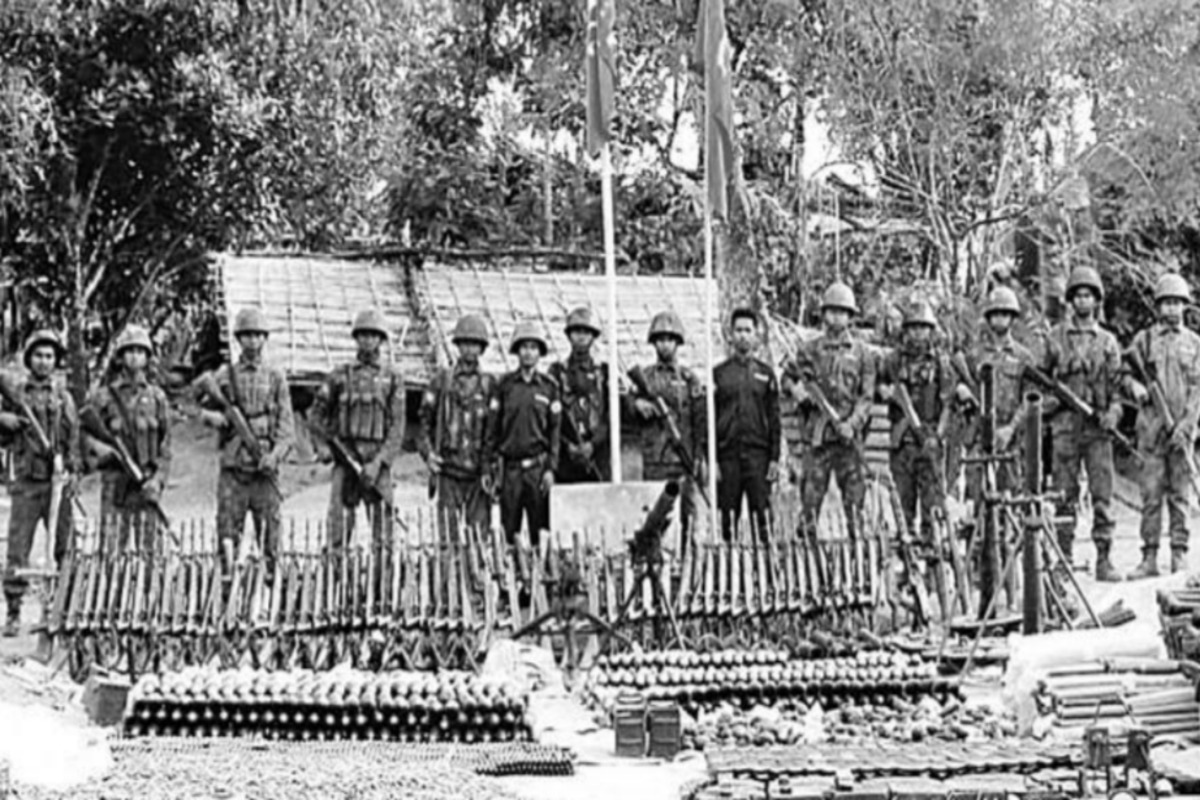Renewables Race
India’s clean energy ambitions are bold and necessary, but the country faces an uphill battle in turning them into reality.
Fearing backlash from China, the Three Brotherhood Alliance (TBA), which controls the Shan state after expelling the military, has also pledged to act against these illicit industries.

Since December 2023, the Myanmar Army has seen a reverse in its control of the cru- cial border region, with ethnic armed organisations (EAOs) gaining the upper hand by expelling the Tat- madaw – as the Myanmarese military is known. The rebels captured Laukkaing, the capital of the Kokang Self-Administered Zone bordering China. The Myanmar National Demo- cratic Alliance Army (MNDAA), which consists of the Kokang minority, a Han-speaking ethnic group, took the lead in this operation supported by its other two partners. Laukkaing is a border town that controls much of the lucrative illicit trade that flows to Myanmar.
China is concerned about these illegal networks and human traffick- ing that have lured Chinese citizens to get involved in online scams in Myanmar. Fearing backlash from China, the Three Brotherhood Alliance (TBA), which controls the Shan state after expelling the military, has also pledged to act against these illicit industries.
Advertisement
The Three Brotherhood Alliance (TBA) that accomplished this spectac- ular victory consists of the Arakan Army (AA), the Myanmar National Democratic Alliance Army (MNDAA) and the Ta’ang National Liberation Army (TNLA), which joined hands in 2019. In the operation in the Shan state to wrest the border town, the MNDAA was helped mainly by the TNLA. Both these groups have over- lapping interests in this region. The Bamar People’s Liberation Army (BPLA) and the Mandalay Peoples Democratic Front (PDF), the pro- democracy militias affiliated with the National Unity Government inspired by military success, joined the TBA to fight the military.
Advertisement
Together, these EAOs have caused casualties, and the Myanmar army has lost nearly 200 outposts since the operation started on 27 October 2023. This attack has brought other groups whose main aim is to remove the junta through multiple attacks in many areas where individual groups have a strong presence.
The Kachin Independence Organisation (KIO) fought under the banner of the PDF and took over the administrative town of Kawlin in Sagaing Region, and many from the Myanmar military surrendered to the rebel group. Similarly, Operation 1111 was launched in Kayah State by the Karenni Nationalities Defense Force and the Karenni National People’s Lib- eration Front—groups aligned to the PDF—to capture the state capital, Loikaw.
The Arakan Army, however, has continued its fight on the western bor- der, the Rakhine State. It has controlled large areas of the Chin and Rakhine States near the Bangladesh border. In November, several Myanmar Army soldiers sought refuge in India after the 2021 Nationwide Ceasefire Agree- ment (NCA) was broken by the Kuki Independent Army, the Kuki National Army and the Chin Land Defence Force, who overran the camps. There are around 600 Myanmar Army sol- diers who have taken refuge in Mizo- ram. They are being successfully repa- triated. Earlier, the Myanmar Police, who defied the Army, also sought refuge in India in 2021.
The fighting has led to the dis- placement of around 60,000 civilians who are escaping the junta’s attack using mortars and bombing civilians using air force and cutting food and fuel supply chains to the civilian areas.
Despite China brokering a cease- fire in December 2023, the alliance was determined to overthrow the country’s ‘dictatorship’, and this cease- fire did not hold ground, forcing China to negotiate another ceasefire in January 2024. The fighting and artillery attacks had destabilised the border and displaced people living there. Border trade with China has also been affected, putting pressure on Myanmar’s economy. The cease- fire in the Shan state holds for the time being. China has a strong influ- ence on the Myanmar Army, as well as with EAOs operating near its bor- der. China has also issued arrest war- rants against four Kokang families involved in ‘electronic fraud crimes’.
Many argue that Min Aung Hlaing’s hold over the Army is loosen- ing, and retired officers have called for his accountability for losing to the EAOs and bringing shame to the Army. This is the first time Tatmadaw has lost large swathes of territory to the EAOs in the last 75 years of Myan- mar’s history. At the same time, no second-rung leadership can challenge the general’s authority.
In mid-January this year, ultrana- tionalist Buddhist monk Ashin Ari- awuntha called for his resignation while speaking in a pro-military rally and suggested that he should hand over power to Vice-Senior General Soe Win. There are reports that Gen. Hlaing and Gen. Soe Win have severe disagreements on military operations. Though the monk was arrested, he was subsequently released to arrest the dissension within the Army.
For now, the military has remained united despite losing their strongholds, which the rebel group has captured. The rebel groups are freeing the surrendered soldiers and allowing them to leave. The six brigadier generals who surrendered were handed death sentences by the military court to stop other soldiers from following their path and leaving the battlefield. Reports show that many armed forces personnel are not ready to fight after conceding territory to the EAOs. The use of mortar and helicopter gunships to bomb villages reveals that the Myanmar Army is in a desperate state.
Furthermore, Myanmar’s politi- cal space would remain fractured. Fragmentation within the Army and the on-going civil war will have reper- cussions on Myanmar’s neighbours. It is already adding to the fragmented ethnic fault line in India. Similarly, the conflict will spill over to Bangladesh, which has provided refuge to the Rohingyas. Myanmar needs to find a solution in consociational democra- cy that perhaps suits the aspirations of several ethnic groups who live in Myanmar.
The Kathmandu Post/ANN
Advertisement